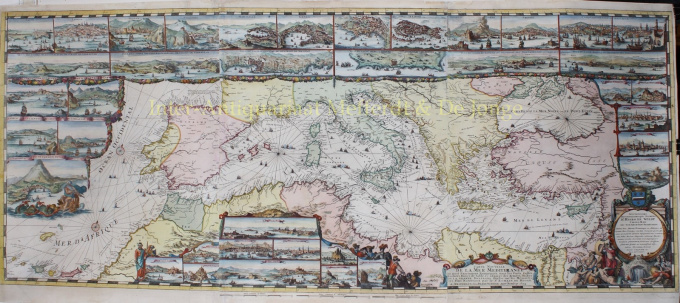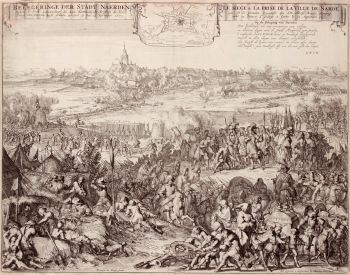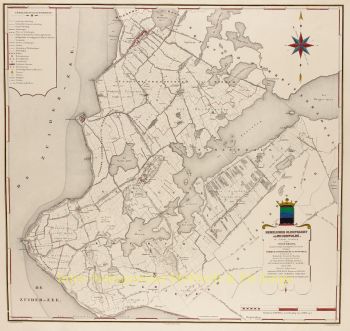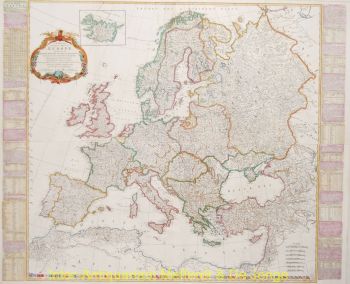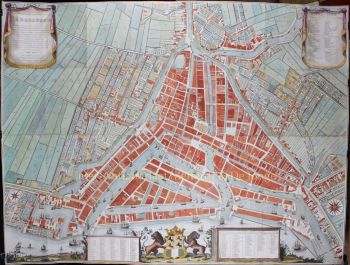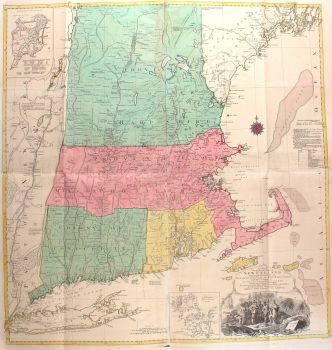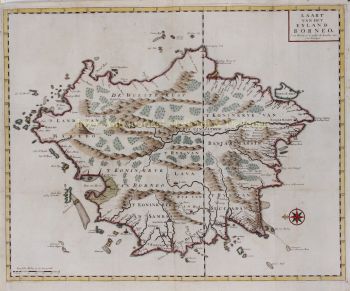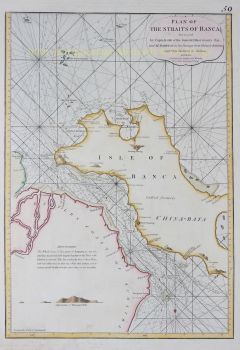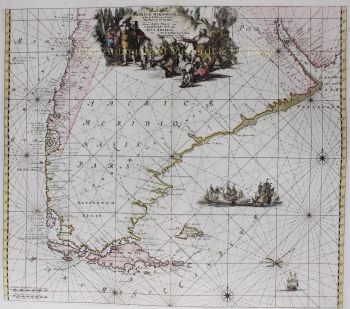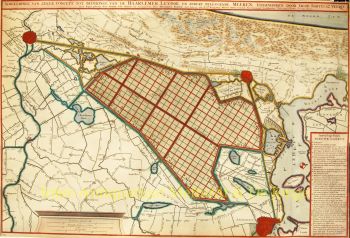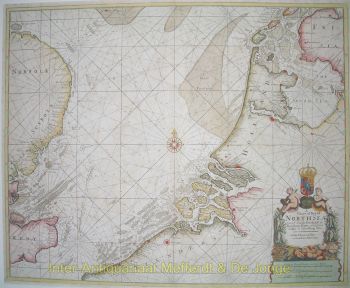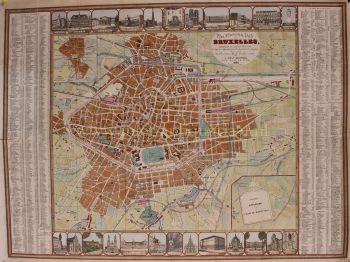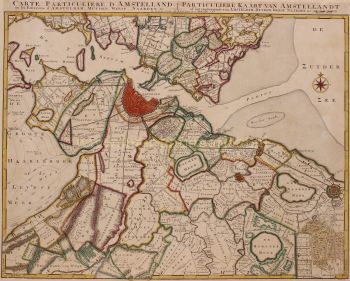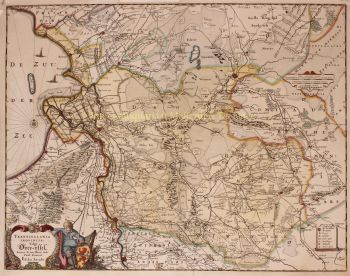Middellandse Zee 1694
Romeijn de Hooghe
Momenteel niet beschikbaar via Gallerease
- Over kunstwerkTHE MOST BEAUTIFUL MAP OF THE MEDITERRANEAN ”Carte Nouvelle de la Mer Mediterranee ou sont Exactement Remarques Tous les Ports, Golfes, Rochers, Bancs de Sable &c.” Copper engraving on 3 conjoined sheets made by Romeijn de Hooghe and publihed with privilege by Pieter Mortier of Amsterdam in 1694. 2nd state of 4. Coloured by a later hand. Size: 58,5 x 139 cm. Rare early edition of de Hooghe’s monumental chart of the Mediterranean Sea with 38 inset maps and views of the major ports and harbours. It includes numerous galleons and galleys, with allegorical figures and sea monsters embellishing the insets. The chart appeared in a special section of Pieter Mortier’s Neptune François, separately titled Cartes Marines a l’Usage des Armées du Roy de la Grande Bretagne. The nine charts in this section, all engraved by De Hooghe himself, are described by Koeman as the “most spectacular type of maritime cartography ever produced in seventeenth century Amsterdam”. The chart of the Mediterranean is the largest and most intricately decorated of the nine. The atlas is dedicated to William III (stadholder of the Netherlands and, after the Glorious Revolution of 1688, also king on the British throne). The map of the Mediterranean mentions a certain Hiob de Wildt and shows his family’s coat of arms . Dr. Hiob de Wildt (1637-1704) was the first secretary of the Admiralty in Amsterdam, the largest and most powerful of the five Dutch admiralties at the time of the Dutch Republic. The Admiralty was entrusted with equipping the Republic’s naval fleet. At the same time De Wildt raised cattle and earned a fortune by supplying the many ships that sailed from Amsterdam with meat. A fine Dutch example of conflicts of interest. Dr. De Wildt lived in a lavish canal house at Herengracht 495 in Amsterdam. Romeijn de Hooghe (1645-1708) from Haarlem, was the most significant and prolific Netherlandish engraver in the second half of the seventeenth century. His oeuvre comprises more than 3500 prints. He kept a studio employing 36 assistants. De Hooghe’s work is highly coveted by map and print collectors. The unprecedented size of the atlas and the use of artists such as De Hooghe, made this work one of the most beautiful of the period. Again Koeman calls it the “most expensive sea atlas” of the period, “intended more as a show-piece than something to be used by the pilots at sea”. Literature: C. Koeman. Atlantes Neerlandici. Volume IV: Celestial and maritime atlases and pilot books. Amsterdam 1970, p. 423-431 D. de Vries. 'Chart making is the power and glory of the country', in: Mirror of Empire. Dutch marine art of the seventeenth century. [Minneapolis] 1990, p. 65-66. R. Putman. Nederlandse Zeekaarten uit de Gouden Eeuw. Abcoude 2005, p. 82-85. Price: Euro 19.000,- (incl. frame)
- Over kunstenaar
Romeyn de Hooghe (1645, Amsterdam – 1708, Haarlem) was etser, tekenaar van prenten, schilder, beeldhouwer, goudsmid, medaillewinnaar, jurist, uitgever van kaarten en auteur van historische geschriften.
In 1673 trouwde Romeyn met Maria Lansman, dochter van een dominee. Ze woonden in Amsterdam aan de Reguliersgracht. Hij illustreerde onder andere Hiëroglyphica of Merkbeelden der oude volkeren (1735), een bekend embleemboek en bronboek voor de klassieke mythologie en haar iconografie. Ook illustreerde hij boeken van Constantijn Huygens en Hugo de Groot. In 1675 had hij een kunsthandel in de Kalverstraat.
In 1677 illustreerde hij de reis van Coenraad van Klenck naar Moskou. Hij maakte vele etsen, waaronder het vuurwerk op de Hofvijver in Den Haag. Een aantal etsen van De Hooghe werd door sommigen afgekeurd, omdat ze schandelijke onderwerpen zouden tonen. Aan de andere kant werd hij gewaardeerd als een groot grafisch satiricus. De Hooghe was een propagandist van de anti-Franse politiek. Hij schilderde grote panelen voor de kamers van het burgemeesterskantoor in Enkhuizen. In 1690 verhuisde hij naar Haarlem, waar hij lessen patroontekenen voor kinderen begon aan de Nieuwe Gracht 13.
Artwork details
Related artworks
- 1 - 4 / 4
- 1 - 4 / 24

